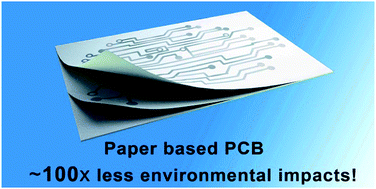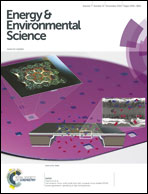Future paper based printed circuit boards for green electronics: fabrication and life cycle assessment†
Abstract
Paper-based electronics have been considered as one of the most exciting technologies in the near future due to sustainability, low cost, mechanical flexibility, etc. Even though there have been numerous studies regarding this technology, there is not any available quantitative study on how paper electronics would minimize the impact on the environment. This work aims to give the first detailed analysis regarding this important question. To this end, we for the first time designed and prototyped paper-based multilayer printed circuit boards (P-PCBs), which show comparable functions to the currently available organic printed circuit boards (O-PCBs); yet the P-PCBs adopt a “green” preparation process. A life cycle assessment study was performed to quantify the P-PCBs' environmental impacts, e.g. acidification potential, global warming potential, human toxic potential, ozone layer depletion potential, etc. Our current research reveals that the P-PCBs have about two magnitude lower impact on the environment than O-PCBs based on the results of the life cycle assessment, which suggests that the P-PCB technique is beneficial for the environment at the regional or global production level. The current study gives useful information and sheds light on the future technological directions for various paper based electronics studies.


 Please wait while we load your content...
Please wait while we load your content...